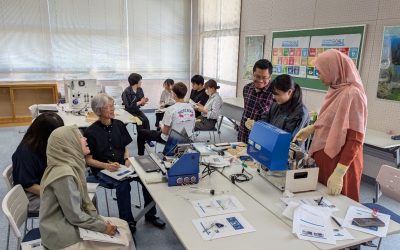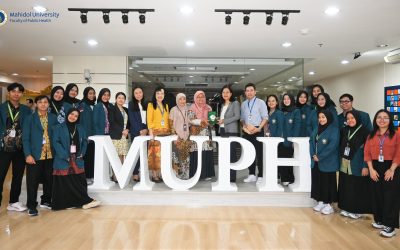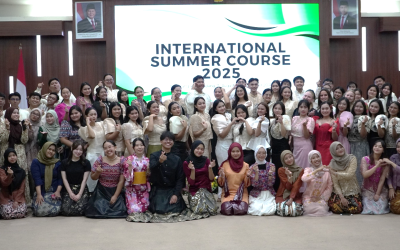JAPAN – The Faculty of Medicine, Diponegoro University (FK Undip) continues to strengthen its strategic research role through its Research Team at the Center of Clinical Toxicology and Environmental Health (CCTEH) by participating in the National Institute for Minamata Disease (NIMD) Forum 2025, an international scientific forum organized by the National Institute for Minamata Disease on September 27–28, 2025. The event was held at the Minamata Disease Archives, Minamata City, Kumamoto Prefecture, Japan, and was broadcast live online to several countries. This year’s forum carried the theme “Improvement of Public Health in Countries with Environmental Problems Related to Mercury.”
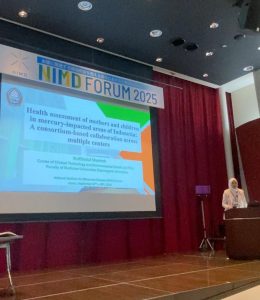
Doctor Muflihatul Muniroh, M.Si, Med., Ph.D. was invited as a speaker representing Indonesia at the NIMD Forum 2025.
A total of 13 researchers from 7 countries, representing 10 different institutions, were invited as speakers at the NIMD Forum 2025. International speakers from outside Japan included: (1) Irina Zastenskaya – WHO Regional Office for Europe, (2) Stephan Böse-O’Reilly – University Hospital, LMU Munich, Germany, (3) Niladri Basu – McGill University, Canada, (4) Carl Stephen Ansah Osei – Ghana Health Service, Ghana, (5) Muflihatul Muniroh – Diponegoro University, Indonesia, and (6) Ganiyu Jamiyu – Federal Ministry of Health of Nigeria, Nigeria. Speakers from Japan included: (1) Yuji Ogawa – Graduate School of Medical and Dental Sciences, Niigata University (WHO CC:JPN-75), (2) Atsuko Ikeda – Hokkaido University Graduate School of Health Sciences, Health Sciences Division (WHO CC:JPN-91), (3) Mayumi Ishizuka – Graduate School of Veterinary Medicine, Hokkaido University, (4) Mitsugu Saito – Asian Institute of Technology, (5) Megumi Yamamoto – NIMD, (6) Mineshi Sakamoto – NIMD, and (7) Sawako Horai – NIMD. Complete information about the NIMD Forum 2025 can be accessed via the link https://nimd-forum.jp/ .
The NIMD Forum has been the leading seminar on mercury-related research since 1997. Its inception stems from the mercury pollution incident in Minamata Bay, caused by the dumping of methylmercury waste from the Chisso Corporation, a chemical company. This waste contaminated marine life such as fish, shellfish, and shrimp, which were later consumed by the residents of Minamata City. Thousands of residents suffered from various neurological symptoms such as visual, speech, and mobility disturbances, and even death, with the first case reported in 1956—an event that came to be known as Minamata Disease. The disease also affected fetuses through pregnant women exposed to methylmercury, resulting in permanent disabilities with symptoms resembling cerebral palsy, referred to as Congenital Minamata Disease.
The active participation of Dr. Muflihatul Muniroh, M.Si, Med., Ph.D. as an invited speaker representing Indonesia served as an important milestone in building synergy and advancing research in mercury toxicology, as well as an international acknowledgment of CCTEH’s research at Diponegoro University’s Faculty of Medicine. In her presentation, Dr. Muflihatul Muniroh shared her findings titled, “Health assessment of mothers and children in mercury-impacted areas of Indonesia: A consortium-based collaboration across multiple centers,” which highlighted the importance of collaborative, cross-institutional approaches in assessing the impact of mercury exposure on vulnerable groups in Indonesia.
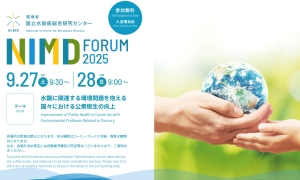
National Institute for Minamata Disease (NIMD) Forum 2025, an international scientific forum organized by the National Institute for Minamata Disease on September 27–28, 2025.
The event was also attended by other CCTEH researchers, including Dr. Saekhol Bakri, M.PH., Ph.D. CCTEH FK Undip is the initiator and Chair of the Consortium for the Study of Indonesian Mother, Children, and Environmental Health (SIMCEH), which consists of the National Research and Innovation Agency (BRIN), Hasanuddin University Makassar, Jember University, and Gorontalo State University.(*)



